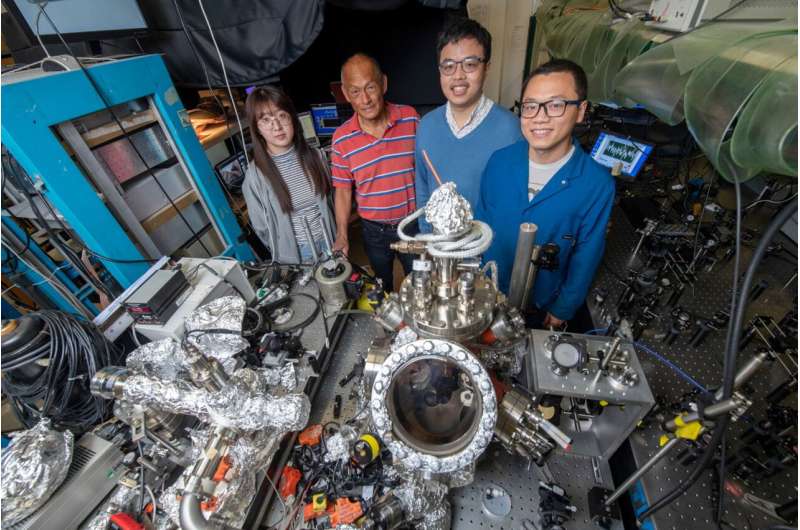
Physicists at the University of California, Irvine have demonstrated the use of a hydrogen molecule as a quantum sensor in a terahertz laser-equipped scanning tunneling microscope, a technique that can measure the chemical properties of materials at unprecedented time and spatial resolutions.
This new technique can be used to analyze two-dimensional materials which have the potential to play a role in advanced energy systems, electronics and quantum computers.
The researchers in the Department of Physics and Astronomy at the University of California, Irvine, describe how they positioned two bound atoms of hydrogen in between the silver tip of the STM and a sample composed of a flat copper surface arrayed with small islands of copper nitride. The scientists were able to detect changes in the quantum states of the hydrogen molecule with the help of a laser that lasted trillionths of a second.
Wilson Ho, Professor of physics and astronomy, said that the project represents an advance in both the measurement technique and the scientific question.
The hydrogen molecule is an example of a two-level system because of its orientation. The scientists can use a laser pulse to get the system to go from a ground state to an excited state in a way that causes a superposition of the two states. Scientists were able to see how the hydrogen molecule was interacting with its environment by measuring the duration of the cyclic oscillations and thedecoherence time.

The hydrogen molecule became part of the quantum microscope because wherever the microscope scanned, the hydrogen was between the tip and the sample. We can see how the charge distributions change on the sample.
The space between the tip and the sample is very small. Ho and his team assembled a piece of equipment that can detect minute electrical current flowing in this space and produce readings that prove the presence of hydrogen molecule and sample elements. This experiment is the first demonstration of a chemistry based on a single molecule.
The ability to characterization materials at this level of detail based on hydrogen's quantum coherence can be of great use in the science and engineering of catalysts, since their functioning often depends on surface imperfections at the scale of single atoms, according to Ho.
As long as hydrogen can be adsorbed onto a material, in principle, you can use hydrogen as a sensor to characterize the material itself through observations of their electrostatic field distribution, said study lead author Likun Wang, a graduate student in astronomy.
A graduate student from the University of California, Irvine, joined Ho and Wang on the project.
More information: Likun Wang et al, Atomic-scale quantum sensing based on the ultrafast coherence of an H 2 molecule in an STM cavity, Science (2022). DOI: 10.1126/science.abn9220 Journal information: Science Citation: Scientists turn a hydrogen molecule into a quantum sensor (2022, April 22) retrieved 22 April 2022 from https://phys.org/news/2022-04-scientists-hydrogen-molecule-quantum-sensor.html This document is subject to copyright. Apart from any fair dealing for the purpose of private study or research, no part may be reproduced without the written permission. The content is provided for information purposes only.